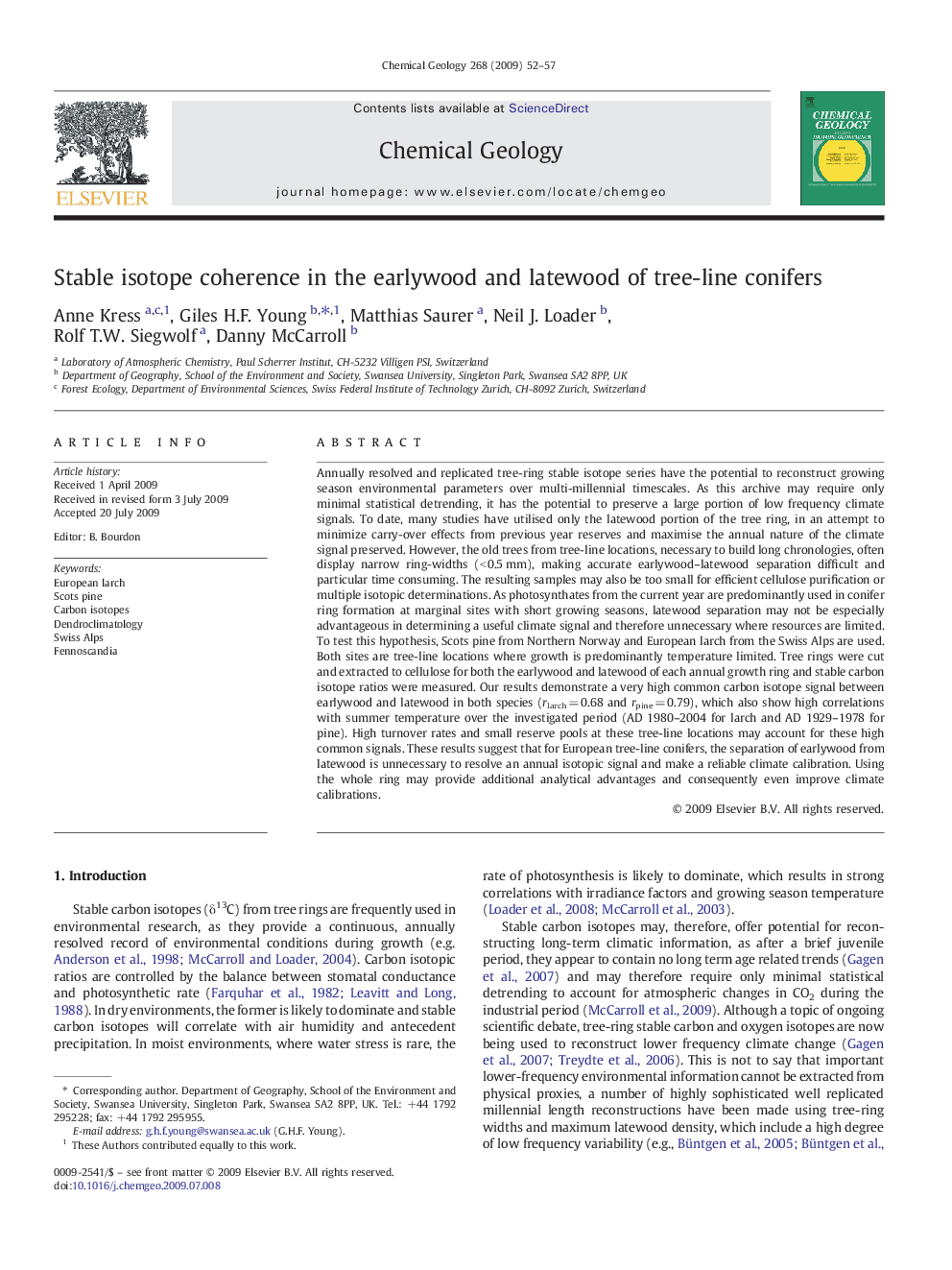| Article ID | Journal | Published Year | Pages | File Type |
|---|---|---|---|---|
| 4700262 | Chemical Geology | 2009 | 6 Pages |
Annually resolved and replicated tree-ring stable isotope series have the potential to reconstruct growing season environmental parameters over multi-millennial timescales. As this archive may require only minimal statistical detrending, it has the potential to preserve a large portion of low frequency climate signals. To date, many studies have utilised only the latewood portion of the tree ring, in an attempt to minimize carry-over effects from previous year reserves and maximise the annual nature of the climate signal preserved. However, the old trees from tree-line locations, necessary to build long chronologies, often display narrow ring-widths (< 0.5 mm), making accurate earlywood–latewood separation difficult and particular time consuming. The resulting samples may also be too small for efficient cellulose purification or multiple isotopic determinations. As photosynthates from the current year are predominantly used in conifer ring formation at marginal sites with short growing seasons, latewood separation may not be especially advantageous in determining a useful climate signal and therefore unnecessary where resources are limited. To test this hypothesis, Scots pine from Northern Norway and European larch from the Swiss Alps are used. Both sites are tree-line locations where growth is predominantly temperature limited. Tree rings were cut and extracted to cellulose for both the earlywood and latewood of each annual growth ring and stable carbon isotope ratios were measured. Our results demonstrate a very high common carbon isotope signal between earlywood and latewood in both species (rlarch = 0.68 and rpine = 0.79), which also show high correlations with summer temperature over the investigated period (AD 1980–2004 for larch and AD 1929–1978 for pine). High turnover rates and small reserve pools at these tree-line locations may account for these high common signals. These results suggest that for European tree-line conifers, the separation of earlywood from latewood is unnecessary to resolve an annual isotopic signal and make a reliable climate calibration. Using the whole ring may provide additional analytical advantages and consequently even improve climate calibrations.
